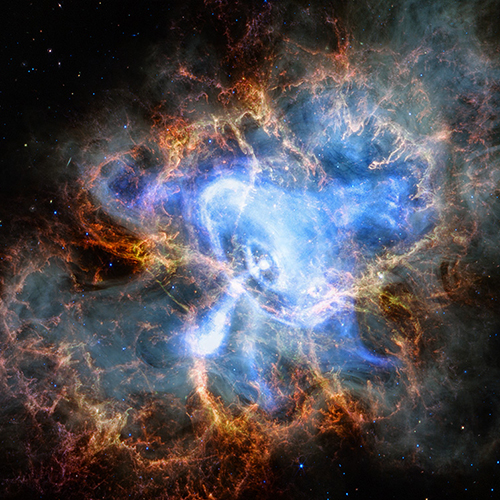
Composite image of the Crab Nebula captured by the Webb Space Telescope (NASA/CC BY 2.0)
On December 25, 2021, a mighty Ariane 5 rocket raced into the sky from French Guiana, signaling the long-awaited launch of NASA’s James Webb Space Telescope. In the weeks that followed, the telescope drifted ever farther from Earth toward its permanent home in space: a gravitationally neutral location nearly a million miles from Earth and on the side of our planet opposite the Sun. Along the way it unfolded like an enormous mechanical butterfly, snapping the 18 segments of its precisely shaped main mirror into place, extending long struts, and unfurling a multi-layered shield to block the Sun’s light.
Now, after 25 years and $10 billion in development, the Webb Space Telescope has begun a 20-year mission of observation that promises to revolutionize our understanding of the universe. Kelly Beatty, senior editor at Sky & Telescope magazine, explores how astronomers are using its state-of-the-art instruments and enormous optical system—which gathers six times more starlight than the Hubble Space Telescope—to detect extremely faint infrared (heat-emitting) objects from both the very near and very distant universe. Beatty discusses the progress to date toward accomplishing the telescope’s scientific goals, such as identifying the earliest stars and galaxies to form after the Big Bang and exploring the planetary systems of other stars.
General Information
